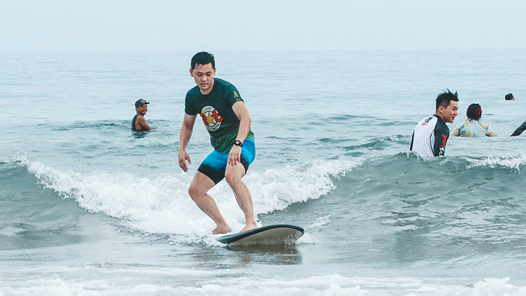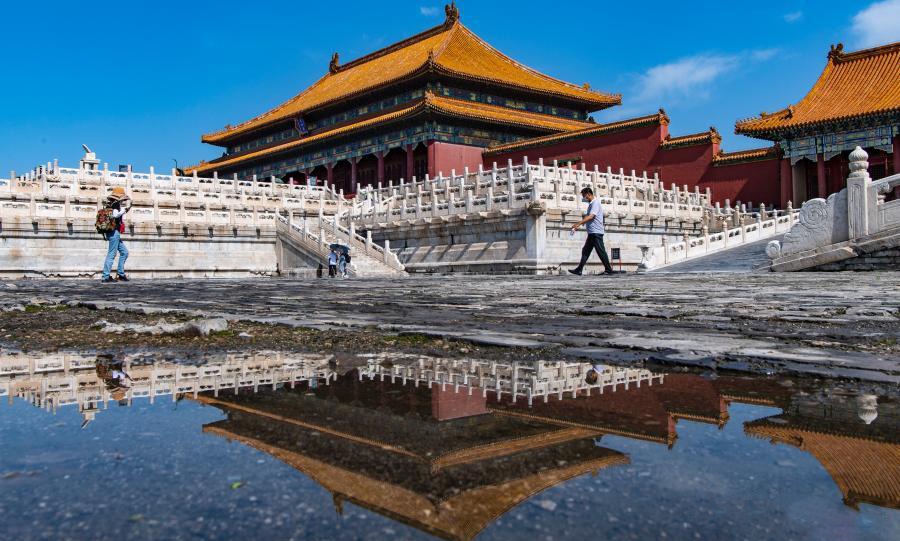In pics: rice-fish co-culture system in east China's Zhejiang
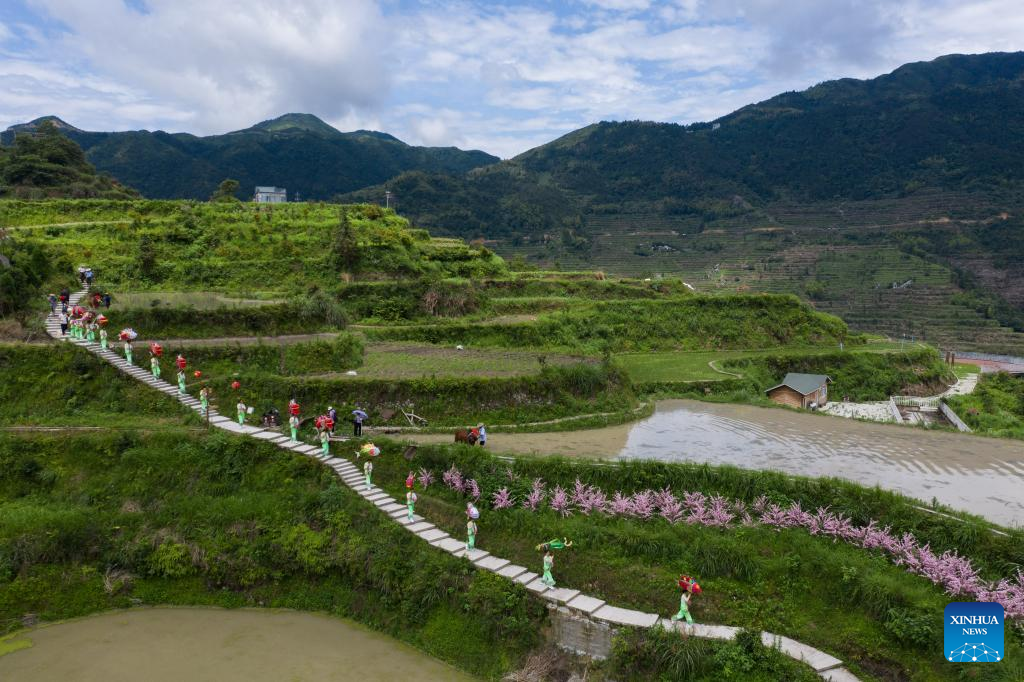
In this aerial photo, villagers celebrate in traditional costumes as they start ploughing and release fish fry into rice fields in Xiaozhoushan Township, Qingtian County, east China's Zhejiang Province, June 11, 2020.
The rice-fish co-culture system in Qingtian has a history of more than 1,300 years and was listed in the world's first group of the Globally Important Agricultural Heritage Systems (GIAHS) designated by the Food and Agriculture Organization of the United Nations (FAO) in 2005.
Qingtian, in the southwestern part of Zhejiang, has sufficient water resources and a terraced landscape. The rice-fish co-culture system can bring handsome incomes to local farmers.
In 2021, the rice-fish co-culture system in Qingtian covered around 3,700 hectares of paddy fields, with an average rice yield of 7.2 tonnes per hectare. The total output value of rice and fish reached 265 million yuan (about 39.3 million U.S. dollars). (Xinhua/Xu Yu)
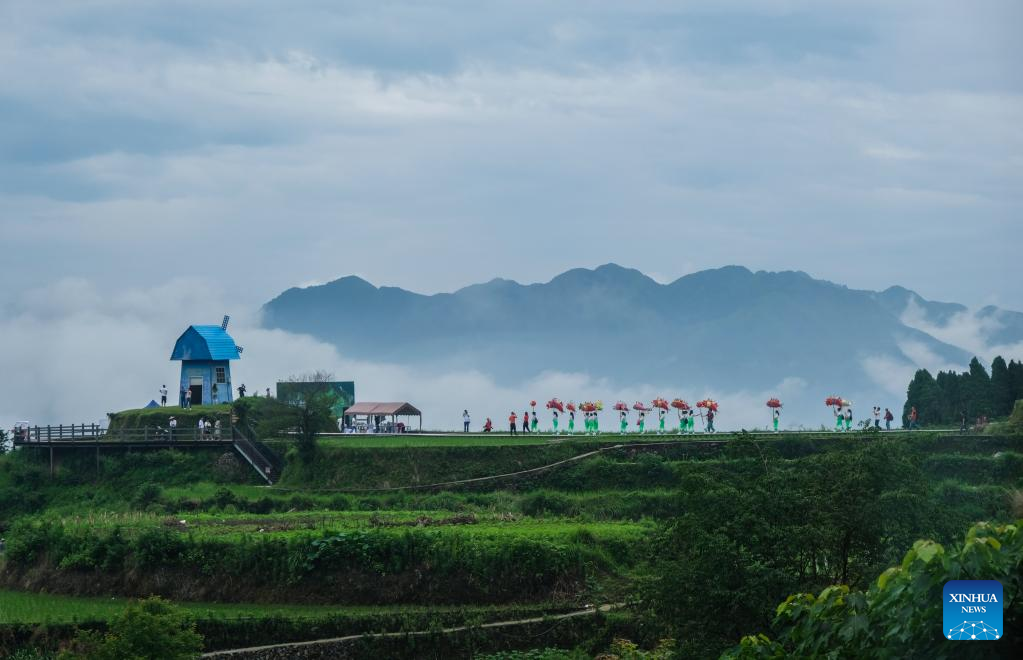
In this aerial photo, villagers celebrate in traditional costumes as they start ploughing and release fish fry into rice fields in Xiaozhoushan Township, Qingtian County, east China's Zhejiang Province, June 11, 2020.
The rice-fish co-culture system in Qingtian has a history of more than 1,300 years and was listed in the world's first group of the Globally Important Agricultural Heritage Systems (GIAHS) designated by the Food and Agriculture Organization of the United Nations (FAO) in 2005.
Qingtian, in the southwestern part of Zhejiang, has sufficient water resources and a terraced landscape. The rice-fish co-culture system can bring handsome incomes to local farmers.
In 2021, the rice-fish co-culture system in Qingtian covered around 3,700 hectares of paddy fields, with an average rice yield of 7.2 tonnes per hectare. The total output value of rice and fish reached 265 million yuan (about 39.3 million U.S. dollars). (Xinhua/Xu Yu)

In this aerial photo, farmers carry buckets of fish fry before releasing them into rice fields in Xiaozhoushan Township, Qingtian County, east China's Zhejiang Province, June 11, 2020.
The rice-fish co-culture system in Qingtian has a history of more than 1,300 years and was listed in the world's first group of the Globally Important Agricultural Heritage Systems (GIAHS) designated by the Food and Agriculture Organization of the United Nations (FAO) in 2005.
Qingtian, in the southwestern part of Zhejiang, has sufficient water resources and a terraced landscape. The rice-fish co-culture system can bring handsome incomes to local farmers.
In 2021, the rice-fish co-culture system in Qingtian covered around 3,700 hectares of paddy fields, with an average rice yield of 7.2 tonnes per hectare. The total output value of rice and fish reached 265 million yuan (about 39.3 million U.S. dollars). (Xinhua/Xu Yu)
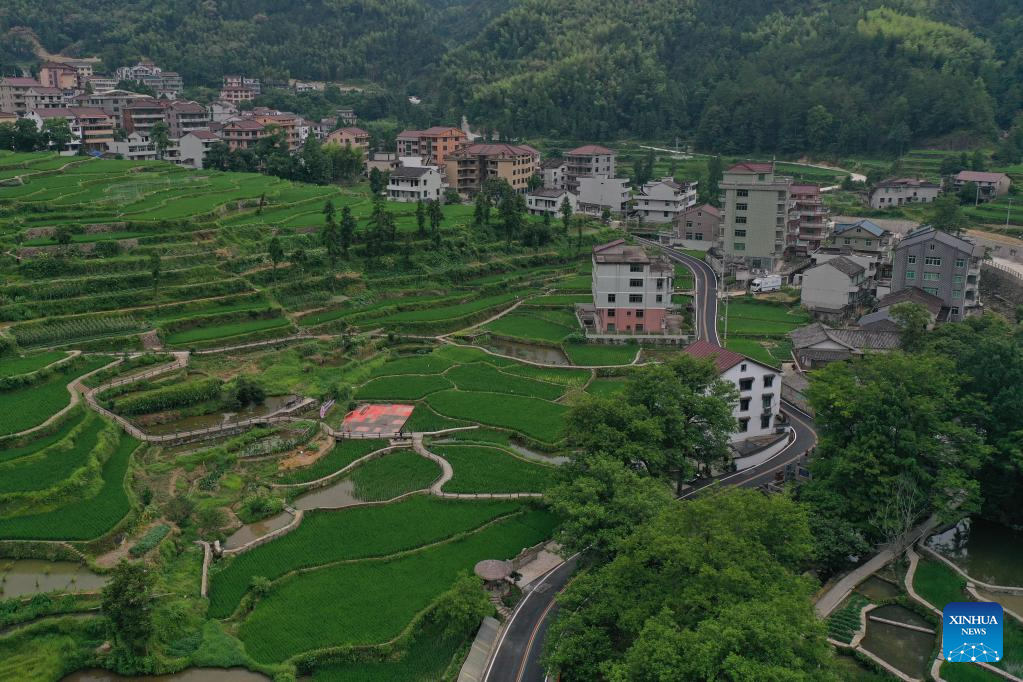
Aerial photo taken on July 18, 2022 shows a protection area of the rice-fish co-culture system in Qingtian County, east China's Zhejiang Province.
The rice-fish co-culture system in Qingtian has a history of more than 1,300 years and was listed in the world's first group of the Globally Important Agricultural Heritage Systems (GIAHS) designated by the Food and Agriculture Organization of the United Nations (FAO) in 2005.
Qingtian, in the southwestern part of Zhejiang, has sufficient water resources and a terraced landscape. The rice-fish co-culture system can bring handsome incomes to local farmers.
In 2021, the rice-fish co-culture system in Qingtian covered around 3,700 hectares of paddy fields, with an average rice yield of 7.2 tonnes per hectare. The total output value of rice and fish reached 265 million yuan (about 39.3 million U.S. dollars). (Xinhua/Huang Zongzhi)
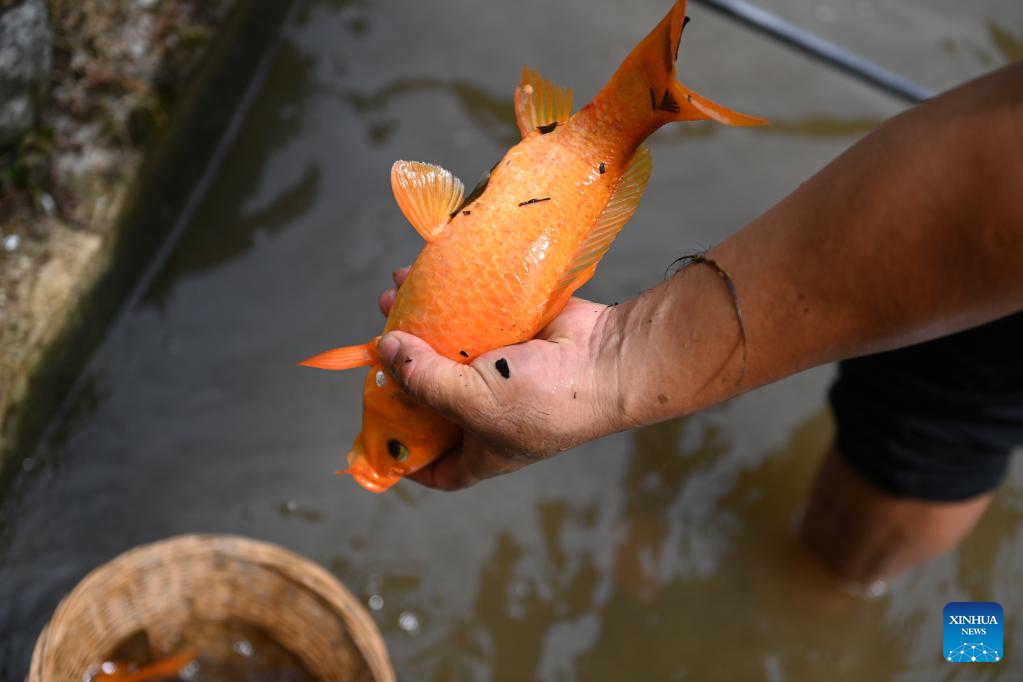
Photo taken on July 19, 2022 shows a fish caught by a farmer in a protection area of the rice-fish co-culture system in Qingtian County, east China's Zhejiang Province.
The rice-fish co-culture system in Qingtian has a history of more than 1,300 years and was listed in the world's first group of the Globally Important Agricultural Heritage Systems (GIAHS) designated by the Food and Agriculture Organization of the United Nations (FAO) in 2005.
Qingtian, in the southwestern part of Zhejiang, has sufficient water resources and a terraced landscape. The rice-fish co-culture system can bring handsome incomes to local farmers.
In 2021, the rice-fish co-culture system in Qingtian covered around 3,700 hectares of paddy fields, with an average rice yield of 7.2 tonnes per hectare. The total output value of rice and fish reached 265 million yuan (about 39.3 million U.S. dollars). (Xinhua/Huang Zongzhi)
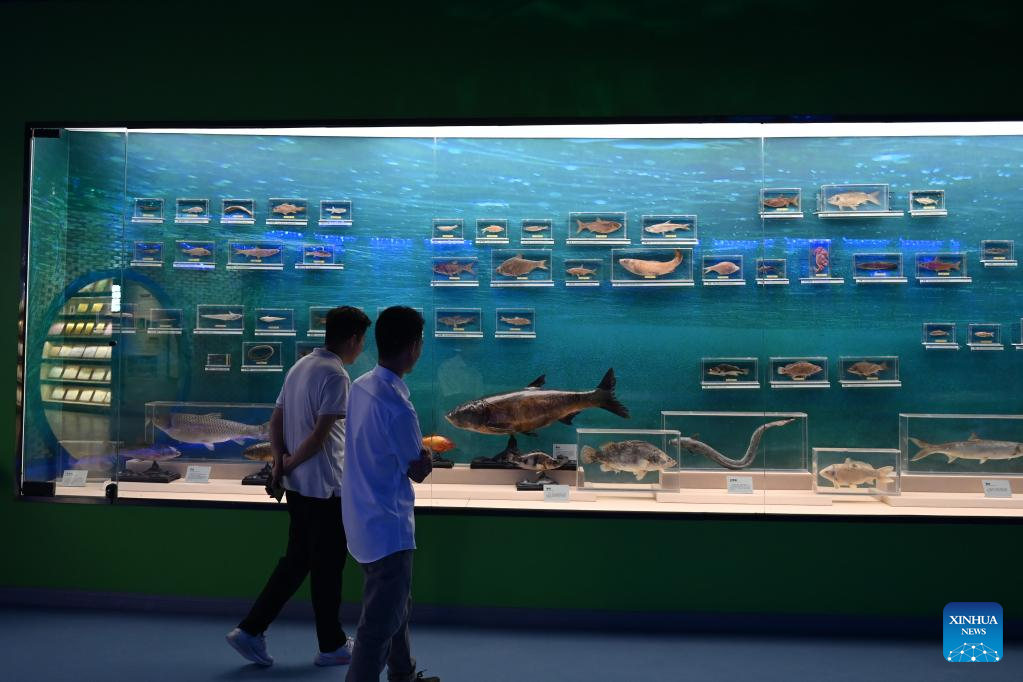
People visit a museum themed on Qingtian rice-fish co-culture system in Qingtian County, east China's Zhejiang Province, July 18, 2022.
The rice-fish co-culture system in Qingtian has a history of more than 1,300 years and was listed in the world's first group of the Globally Important Agricultural Heritage Systems (GIAHS) designated by the Food and Agriculture Organization of the United Nations (FAO) in 2005.
Qingtian, in the southwestern part of Zhejiang, has sufficient water resources and a terraced landscape. The rice-fish co-culture system can bring handsome incomes to local farmers.
In 2021, the rice-fish co-culture system in Qingtian covered around 3,700 hectares of paddy fields, with an average rice yield of 7.2 tonnes per hectare. The total output value of rice and fish reached 265 million yuan (about 39.3 million U.S. dollars). (Xinhua/Huang Zongzhi)
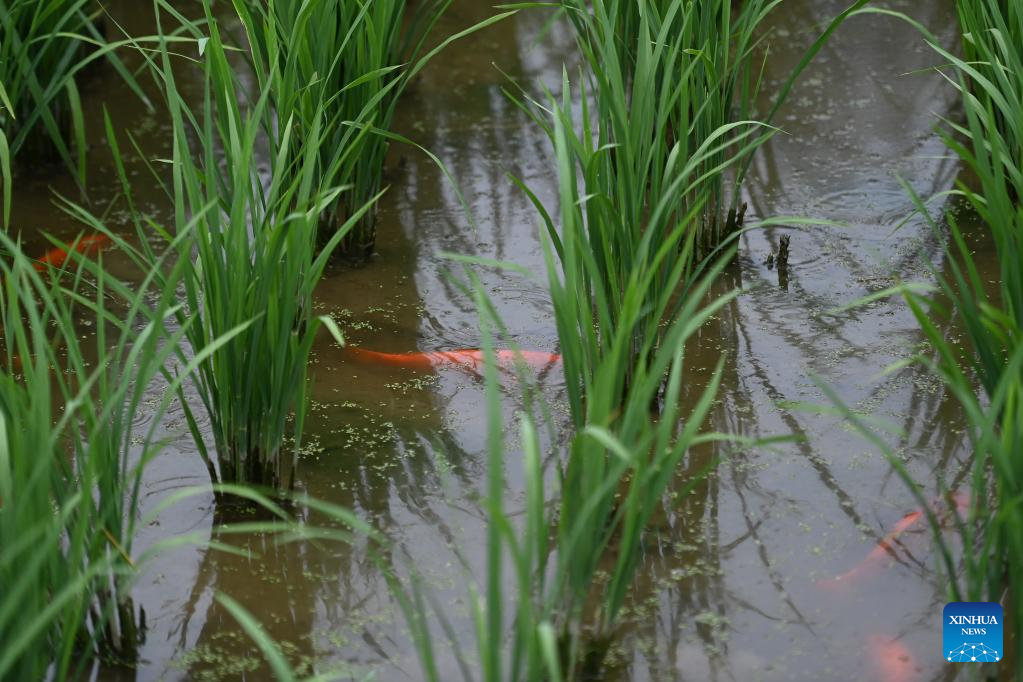
Photo taken on July 18, 2022 shows fish swimming in a protection area of the rice-fish co-culture system in Qingtian County, east China's Zhejiang Province.
The rice-fish co-culture system in Qingtian has a history of more than 1,300 years and was listed in the world's first group of the Globally Important Agricultural Heritage Systems (GIAHS) designated by the Food and Agriculture Organization of the United Nations (FAO) in 2005.
Qingtian, in the southwestern part of Zhejiang, has sufficient water resources and a terraced landscape. The rice-fish co-culture system can bring handsome incomes to local farmers.
In 2021, the rice-fish co-culture system in Qingtian covered around 3,700 hectares of paddy fields, with an average rice yield of 7.2 tonnes per hectare. The total output value of rice and fish reached 265 million yuan (about 39.3 million U.S. dollars). (Xinhua/Huang Zongzhi)
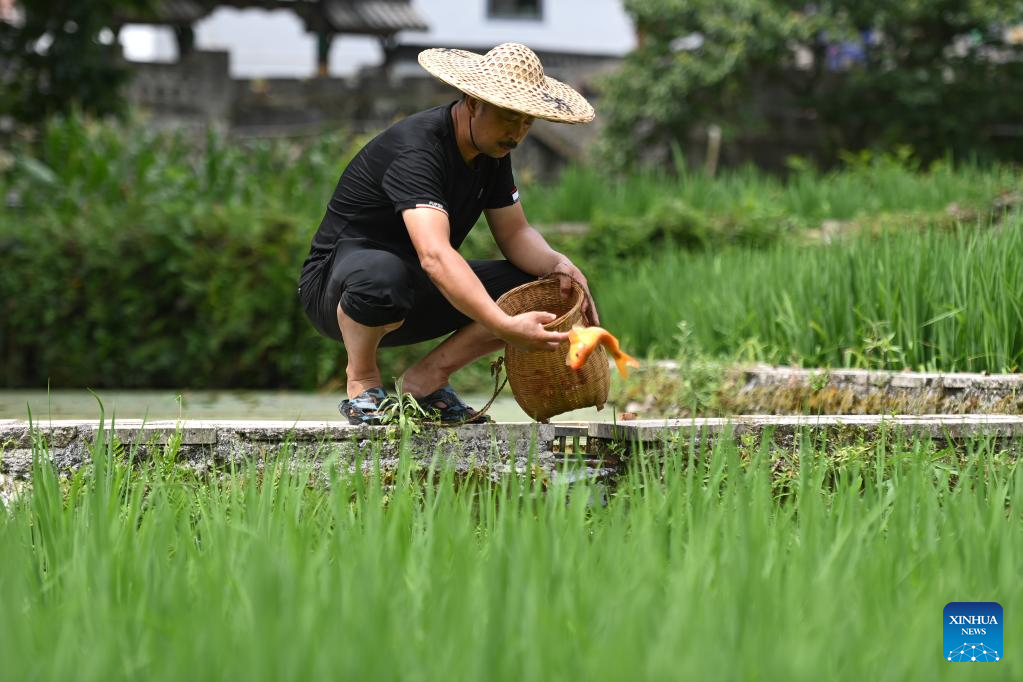
A farmer releases a fish into a rice field in a protection area of the rice-fish co-culture system in Qingtian County, east China's Zhejiang Province, July 19, 2022.
The rice-fish co-culture system in Qingtian has a history of more than 1,300 years and was listed in the world's first group of the Globally Important Agricultural Heritage Systems (GIAHS) designated by the Food and Agriculture Organization of the United Nations (FAO) in 2005.
Qingtian, in the southwestern part of Zhejiang, has sufficient water resources and a terraced landscape. The rice-fish co-culture system can bring handsome incomes to local farmers.
In 2021, the rice-fish co-culture system in Qingtian covered around 3,700 hectares of paddy fields, with an average rice yield of 7.2 tonnes per hectare. The total output value of rice and fish reached 265 million yuan (about 39.3 million U.S. dollars). (Xinhua/Huang Zongzhi)
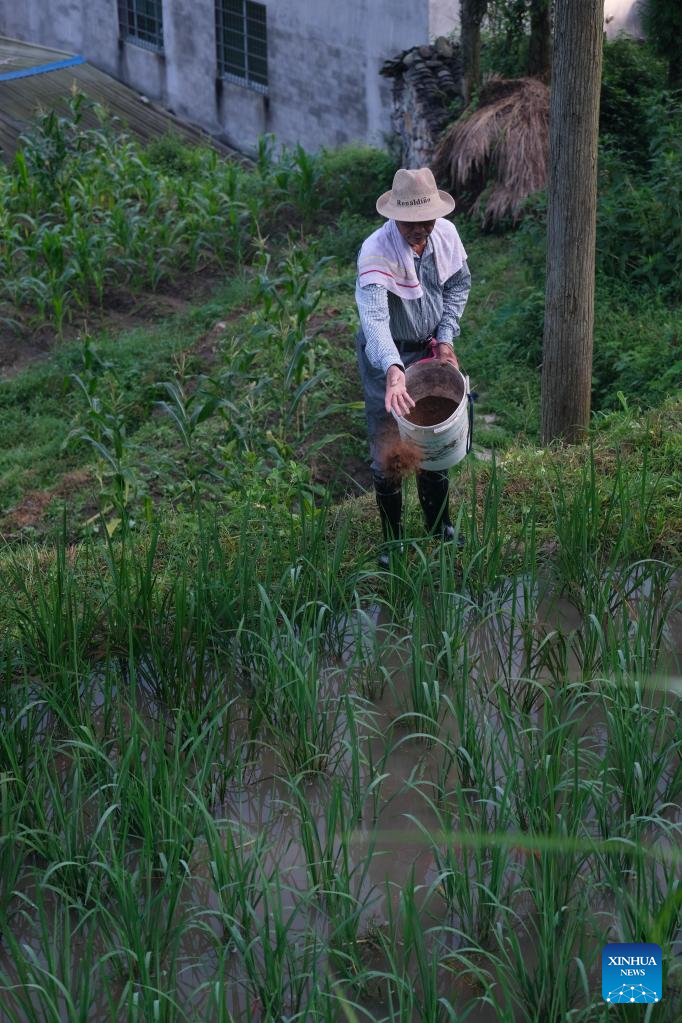
A farmer feeds fish in Xiaozhoushan Township, Qingtian County, east China's Zhejiang Province, July 25, 2019.
The rice-fish co-culture system in Qingtian has a history of more than 1,300 years and was listed in the world's first group of the Globally Important Agricultural Heritage Systems (GIAHS) designated by the Food and Agriculture Organization of the United Nations (FAO) in 2005.
Qingtian, in the southwestern part of Zhejiang, has sufficient water resources and a terraced landscape. The rice-fish co-culture system can bring handsome incomes to local farmers.
In 2021, the rice-fish co-culture system in Qingtian covered around 3,700 hectares of paddy fields, with an average rice yield of 7.2 tonnes per hectare. The total output value of rice and fish reached 265 million yuan (about 39.3 million U.S. dollars). (Xinhua/Xu Yu)

People visit a protection area of the rice-fish co-culture system in Qingtian County, east China's Zhejiang Province, July 18, 2022.
The rice-fish co-culture system in Qingtian has a history of more than 1,300 years and was listed in the world's first group of the Globally Important Agricultural Heritage Systems (GIAHS) designated by the Food and Agriculture Organization of the United Nations (FAO) in 2005.
Qingtian, in the southwestern part of Zhejiang, has sufficient water resources and a terraced landscape. The rice-fish co-culture system can bring handsome incomes to local farmers.
In 2021, the rice-fish co-culture system in Qingtian covered around 3,700 hectares of paddy fields, with an average rice yield of 7.2 tonnes per hectare. The total output value of rice and fish reached 265 million yuan (about 39.3 million U.S. dollars). (Xinhua/Huang Zongzhi)
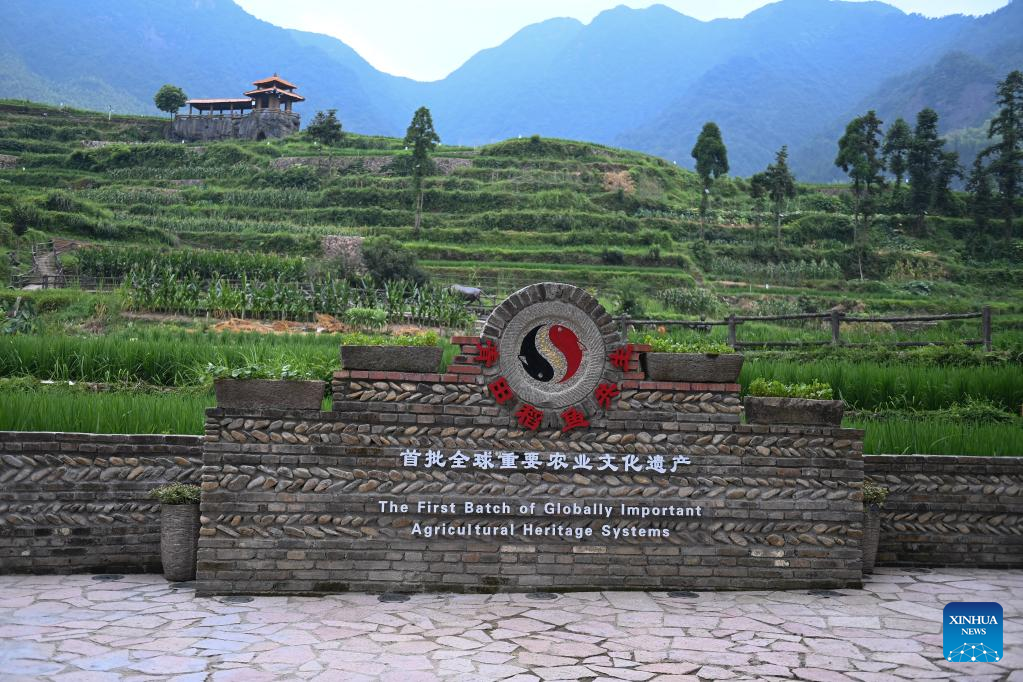
Photo taken on July 18, 2022 shows a protection area of the rice-fish co-culture system in Qingtian County, east China's Zhejiang Province.
The rice-fish co-culture system in Qingtian has a history of more than 1,300 years and was listed in the world's first group of the Globally Important Agricultural Heritage Systems (GIAHS) designated by the Food and Agriculture Organization of the United Nations (FAO) in 2005.
Qingtian, in the southwestern part of Zhejiang, has sufficient water resources and a terraced landscape. The rice-fish co-culture system can bring handsome incomes to local farmers.
In 2021, the rice-fish co-culture system in Qingtian covered around 3,700 hectares of paddy fields, with an average rice yield of 7.2 tonnes per hectare. The total output value of rice and fish reached 265 million yuan (about 39.3 million U.S. dollars). (Xinhua/Huang Zongzhi)
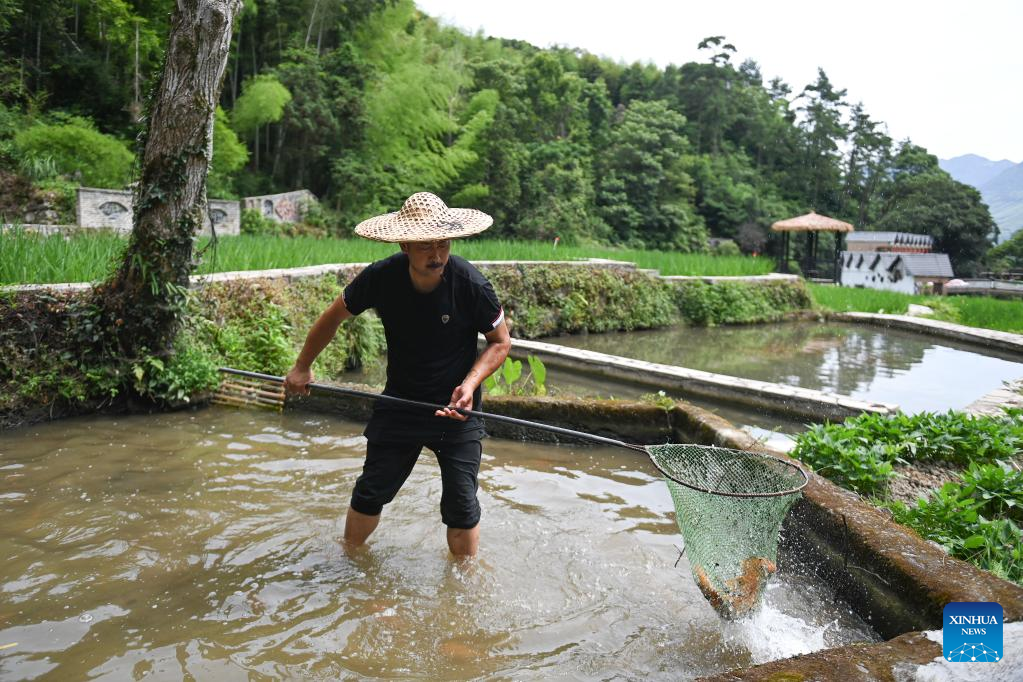
A farmer catches fish in a protection area of the rice-fish co-culture system in Qingtian County, east China's Zhejiang Province, July 19, 2022.
The rice-fish co-culture system in Qingtian has a history of more than 1,300 years and was listed in the world's first group of the Globally Important Agricultural Heritage Systems (GIAHS) designated by the Food and Agriculture Organization of the United Nations (FAO) in 2005.
Qingtian, in the southwestern part of Zhejiang, has sufficient water resources and a terraced landscape. The rice-fish co-culture system can bring handsome incomes to local farmers.
In 2021, the rice-fish co-culture system in Qingtian covered around 3,700 hectares of paddy fields, with an average rice yield of 7.2 tonnes per hectare. The total output value of rice and fish reached 265 million yuan (about 39.3 million U.S. dollars). (Xinhua/Huang Zongzhi)
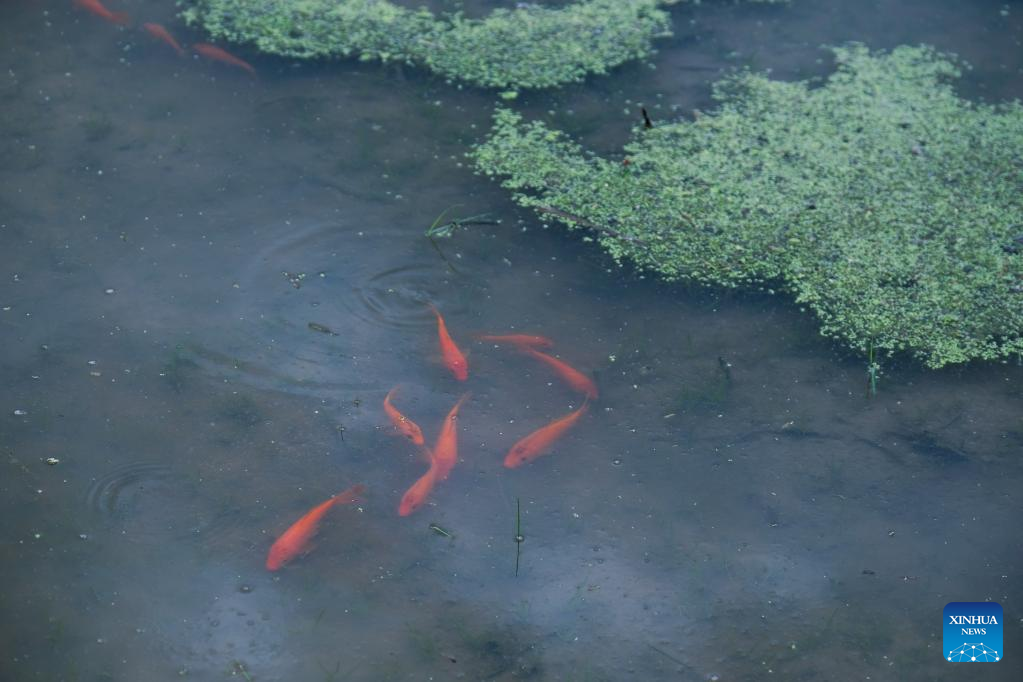
Photo taken on June 11, 2020 shows fish swimming in a rice field in Xiaozhoushan Township, Qingtian County, east China's Zhejiang Province.
The rice-fish co-culture system in Qingtian has a history of more than 1,300 years and was listed in the world's first group of the Globally Important Agricultural Heritage Systems (GIAHS) designated by the Food and Agriculture Organization of the United Nations (FAO) in 2005.
Qingtian, in the southwestern part of Zhejiang, has sufficient water resources and a terraced landscape. The rice-fish co-culture system can bring handsome incomes to local farmers.
In 2021, the rice-fish co-culture system in Qingtian covered around 3,700 hectares of paddy fields, with an average rice yield of 7.2 tonnes per hectare. The total output value of rice and fish reached 265 million yuan (about 39.3 million U.S. dollars). (Xinhua/Xu Yu)

Aerial photo taken on July 25, 2019 shows terraced rice fields in Xiaozhoushan Township, Qingtian County, east China's Zhejiang Province.
The rice-fish co-culture system in Qingtian has a history of more than 1,300 years and was listed in the world's first group of the Globally Important Agricultural Heritage Systems (GIAHS) designated by the Food and Agriculture Organization of the United Nations (FAO) in 2005.
Qingtian, in the southwestern part of Zhejiang, has sufficient water resources and a terraced landscape. The rice-fish co-culture system can bring handsome incomes to local farmers.
In 2021, the rice-fish co-culture system in Qingtian covered around 3,700 hectares of paddy fields, with an average rice yield of 7.2 tonnes per hectare. The total output value of rice and fish reached 265 million yuan (about 39.3 million U.S. dollars). (Xinhua/Xu Yu)

Aerial photo taken on July 25, 2019 shows terraced rice fields in Xiaozhoushan Township, Qingtian County, east China's Zhejiang Province.
The rice-fish co-culture system in Qingtian has a history of more than 1,300 years and was listed in the world's first group of the Globally Important Agricultural Heritage Systems (GIAHS) designated by the Food and Agriculture Organization of the United Nations (FAO) in 2005.
Qingtian, in the southwestern part of Zhejiang, has sufficient water resources and a terraced landscape. The rice-fish co-culture system can bring handsome incomes to local farmers.
In 2021, the rice-fish co-culture system in Qingtian covered around 3,700 hectares of paddy fields, with an average rice yield of 7.2 tonnes per hectare. The total output value of rice and fish reached 265 million yuan (about 39.3 million U.S. dollars). (Xinhua/Xu Yu)
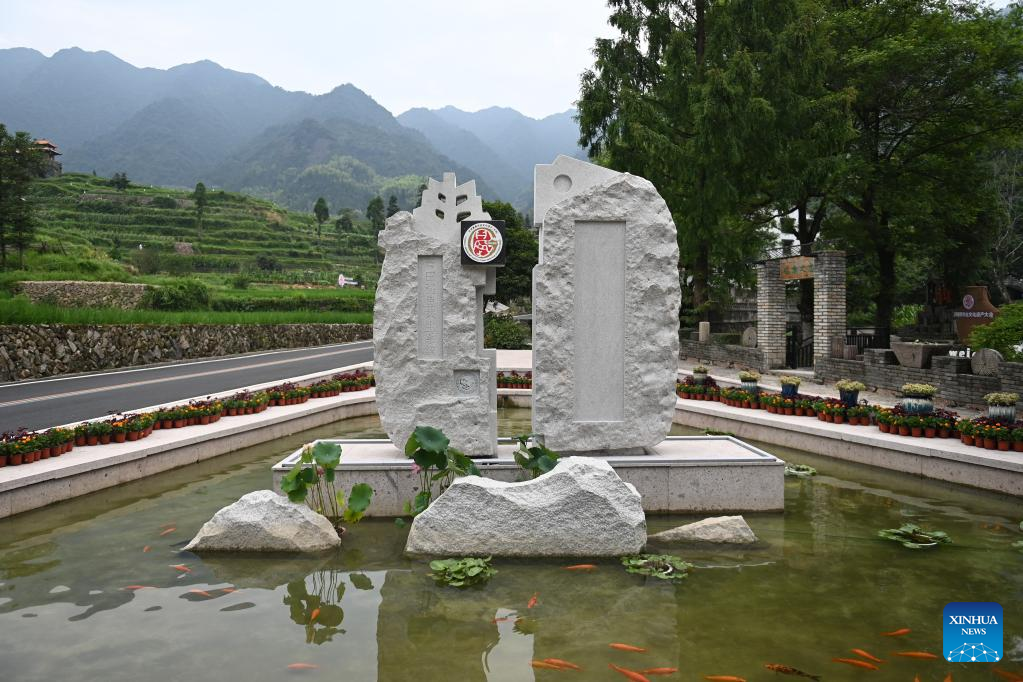
Photo taken on July 18, 2022 shows a protection area of the rice-fish co-culture system in Qingtian County, east China's Zhejiang Province.
The rice-fish co-culture system in Qingtian has a history of more than 1,300 years and was listed in the world's first group of the Globally Important Agricultural Heritage Systems (GIAHS) designated by the Food and Agriculture Organization of the United Nations (FAO) in 2005.
Qingtian, in the southwestern part of Zhejiang, has sufficient water resources and a terraced landscape. The rice-fish co-culture system can bring handsome incomes to local farmers.
In 2021, the rice-fish co-culture system in Qingtian covered around 3,700 hectares of paddy fields, with an average rice yield of 7.2 tonnes per hectare. The total output value of rice and fish reached 265 million yuan (about 39.3 million U.S. dollars). (Xinhua/Huang Zongzhi)

A farmer releases fish fry into a rice field in Xiaozhoushan Township, Qingtian County, east China's Zhejiang Province, June 11, 2020.
The rice-fish co-culture system in Qingtian has a history of more than 1,300 years and was listed in the world's first group of the Globally Important Agricultural Heritage Systems (GIAHS) designated by the Food and Agriculture Organization of the United Nations (FAO) in 2005.
Qingtian, in the southwestern part of Zhejiang, has sufficient water resources and a terraced landscape. The rice-fish co-culture system can bring handsome incomes to local farmers.
In 2021, the rice-fish co-culture system in Qingtian covered around 3,700 hectares of paddy fields, with an average rice yield of 7.2 tonnes per hectare. The total output value of rice and fish reached 265 million yuan (about 39.3 million U.S. dollars). (Xinhua/Xu Yu)

Aerial photo taken on July 18, 2022 shows a protection area of the rice-fish co-culture system in Qingtian County, east China's Zhejiang Province.
The rice-fish co-culture system in Qingtian has a history of more than 1,300 years and was listed in the world's first group of the Globally Important Agricultural Heritage Systems (GIAHS) designated by the Food and Agriculture Organization of the United Nations (FAO) in 2005.
Qingtian, in the southwestern part of Zhejiang, has sufficient water resources and a terraced landscape. The rice-fish co-culture system can bring handsome incomes to local farmers.
In 2021, the rice-fish co-culture system in Qingtian covered around 3,700 hectares of paddy fields, with an average rice yield of 7.2 tonnes per hectare. The total output value of rice and fish reached 265 million yuan (about 39.3 million U.S. dollars). (Xinhua/Huang Zongzhi)
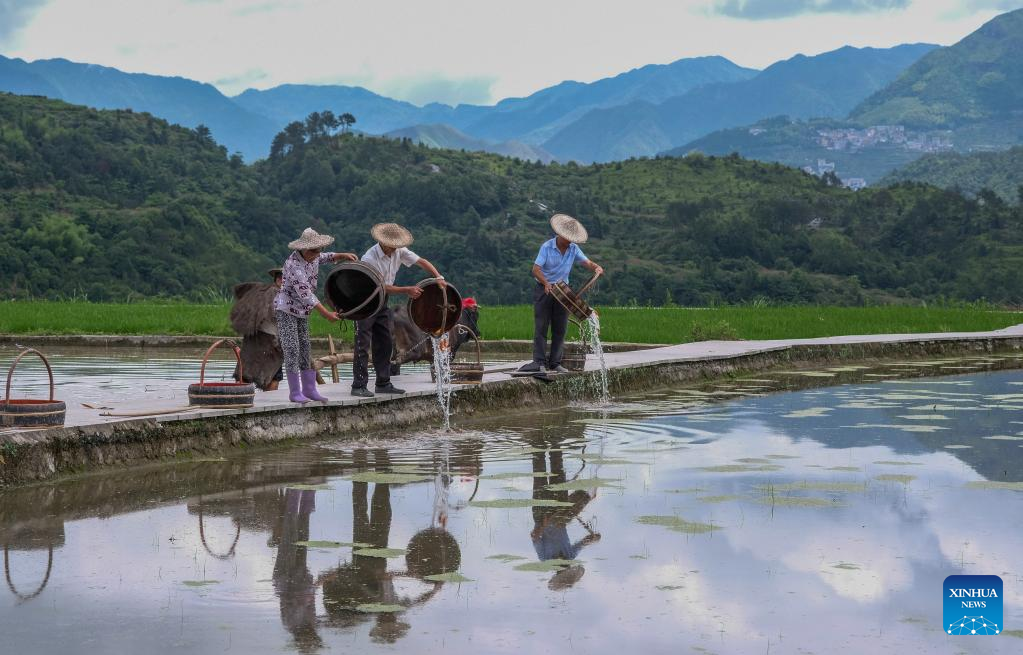
Farmers release fish fry into a rice field in Xiaozhoushan Township, Qingtian County, east China's Zhejiang Province, June 11, 2020.
The rice-fish co-culture system in Qingtian has a history of more than 1,300 years and was listed in the world's first group of the Globally Important Agricultural Heritage Systems (GIAHS) designated by the Food and Agriculture Organization of the United Nations (FAO) in 2005.
Qingtian, in the southwestern part of Zhejiang, has sufficient water resources and a terraced landscape. The rice-fish co-culture system can bring handsome incomes to local farmers.
In 2021, the rice-fish co-culture system in Qingtian covered around 3,700 hectares of paddy fields, with an average rice yield of 7.2 tonnes per hectare. The total output value of rice and fish reached 265 million yuan (about 39.3 million U.S. dollars). (Xinhua/Xu Yu)
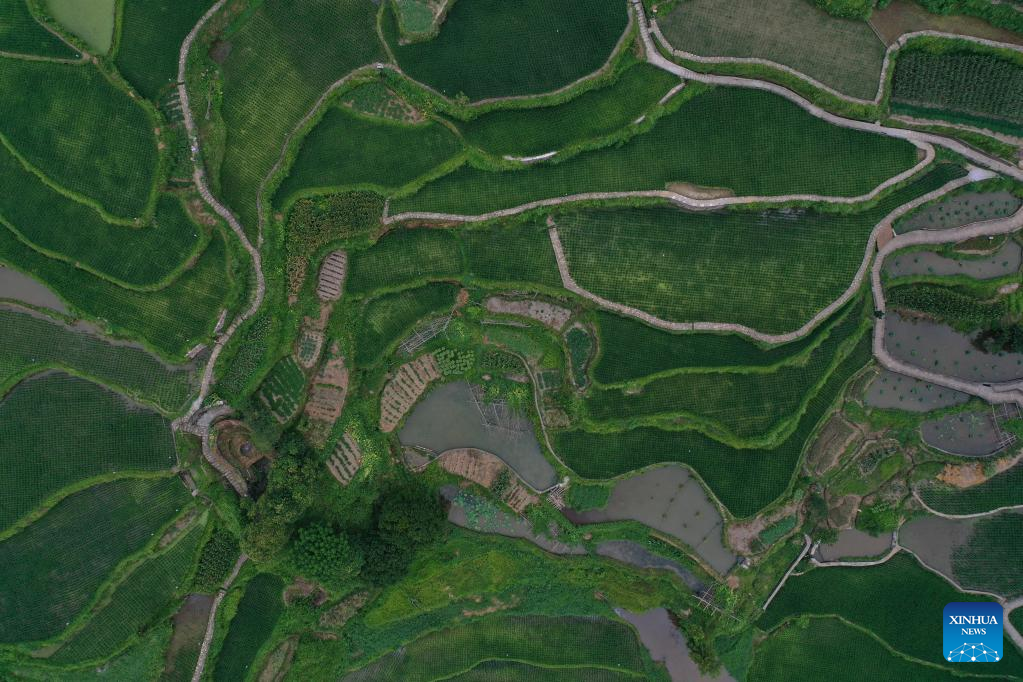
Aerial photo taken on July 18, 2022 shows a protection area of the rice-fish co-culture system in Qingtian County, east China's Zhejiang Province.
The rice-fish co-culture system in Qingtian has a history of more than 1,300 years and was listed in the world's first group of the Globally Important Agricultural Heritage Systems (GIAHS) designated by the Food and Agriculture Organization of the United Nations (FAO) in 2005.
Qingtian, in the southwestern part of Zhejiang, has sufficient water resources and a terraced landscape. The rice-fish co-culture system can bring handsome incomes to local farmers.
In 2021, the rice-fish co-culture system in Qingtian covered around 3,700 hectares of paddy fields, with an average rice yield of 7.2 tonnes per hectare. The total output value of rice and fish reached 265 million yuan (about 39.3 million U.S. dollars). (Xinhua/Huang Zongzhi)
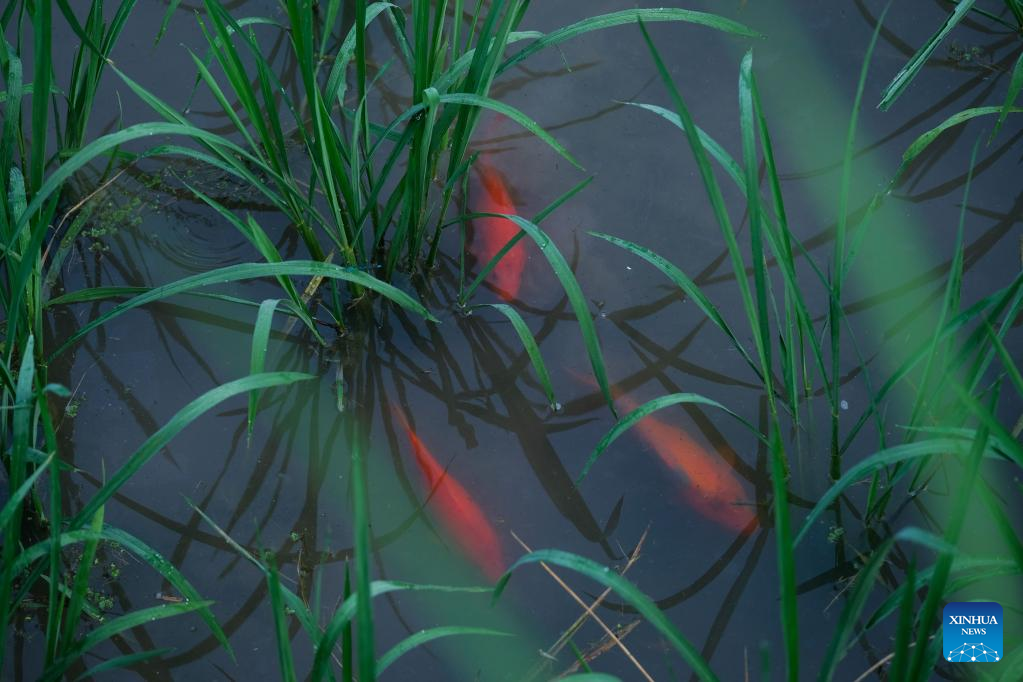
Photo taken on July 25, 2019 shows fish swimming in a terraced rice field in Xiaozhoushan Township, Qingtian County, east China's Zhejiang Province.
The rice-fish co-culture system in Qingtian has a history of more than 1,300 years and was listed in the world's first group of the Globally Important Agricultural Heritage Systems (GIAHS) designated by the Food and Agriculture Organization of the United Nations (FAO) in 2005.
Qingtian, in the southwestern part of Zhejiang, has sufficient water resources and a terraced landscape. The rice-fish co-culture system can bring handsome incomes to local farmers.
In 2021, the rice-fish co-culture system in Qingtian covered around 3,700 hectares of paddy fields, with an average rice yield of 7.2 tonnes per hectare. The total output value of rice and fish reached 265 million yuan (about 39.3 million U.S. dollars). (Xinhua/Xu Yu)

A farmer plows the rice field in Xiaozhoushan Township, Qingtian County, east China's Zhejiang Province, June 11, 2020.
The rice-fish co-culture system in Qingtian has a history of more than 1,300 years and was listed in the world's first group of the Globally Important Agricultural Heritage Systems (GIAHS) designated by the Food and Agriculture Organization of the United Nations (FAO) in 2005.
Qingtian, in the southwestern part of Zhejiang, has sufficient water resources and a terraced landscape. The rice-fish co-culture system can bring handsome incomes to local farmers.
In 2021, the rice-fish co-culture system in Qingtian covered around 3,700 hectares of paddy fields, with an average rice yield of 7.2 tonnes per hectare. The total output value of rice and fish reached 265 million yuan (about 39.3 million U.S. dollars). (Xinhua/Xu Yu)
Photos
Related Stories
- Night view during folk festival in Sandu Fishing Village, China's Zhejiang
- Street view of ancient city of Taizhou in Zhejiang
- E China's Zhejiang strives to achieve common prosperity
- China’s Zhejiang solidly pushes forward construction of common prosperity demonstration zone
- Improved local ecology attracts egrets in E China's Zhejiang
Copyright © 2022 People's Daily Online. All Rights Reserved.






